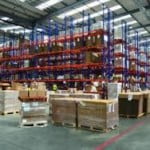Like other industries, information technology—commonly known as IT—comprises many subfields. And all of them involve the study and application of technology for collecting, storing, organizing, analyzing and sharing data. In a general sense, information systems, or IS, can be considered the same thing as IT, since it concerns the use of computer systems and software in processing and distributing information.
However, the true definition of information systems is more specific; people rely on computer systems and data processing to help companies with defining and achieving their goals. So, ultimately, IS actually functions as a branch of IT, and it plays a crucial part in the well being of your business.
The Basics
Many companies work with large amounts of data, which are composed of facts and statistics. Using software, companies store the data in computer systems. It is there that the data is organized and analyzed to produce information that can help you make the best decisions for your company.
Components
Your computer-based information system must consist of the hardware, software and data. The hardware is the computer system itself, plus all its supporting accessories, such as input/output cables and storage capacity. The software is the program that is installed in the computer for handling the data; affordable software for your business can be purchased from any of a multitude of software manufacturers and providers.
Also needed are people from your company that are trained to operate the computer system by relying on its accompanying procedures. In a company, people are connected to the information system via their computers in a network; this enables employees to exchange data or information within the organization. The hardware, software, data, network, and procedures virtually comprise the general IT department of your company.

Types
For a long time, information systems were split into four categories, in ascending order of importance: transaction processing systems (TPS), management information systems (MIS), decision support systems (DSS), and executive information systems (EIS). According to Blue Collar Software (www.bluecollarsoftware.com), transaction processing systems process transactions, like the ones at department or grocery stores.
MIS provides the information that management at the basic level needs to run a company; DSS accommodates the same function, but at a higher level of management. At the top tier is EIS, which helps senior-level executives make decisions. With the advance of technology, other IS models have appeared and challenged the original pyramid scheme.
They range from general purpose systems like database management systems (DBMS), which combines data and software; to specialized ones like enterprise resource planning (ERP), which integrates management of all internal and external information in a company. So, it’s up to you to decide on what information system to choose based on the nature and needs of your enterprise.
Management
To have the best IS environment, it is imperative to choose the right kind of professionals for the job. Ideally, the company must have a Chief Information Officer (CIO). Serving as a senior executive alongside other professionals like the CEO (Chief Executive Officer), Chief Financial Officer (CFO), and COO (Chief Operating Officer), the CIO oversees the IT department. Also helpful is hiring a Chief Information Security Officer (CISO), who focuses on managing the security of the company’s information systems. However, in some cases, the CIO can also serves as the CISO, depending on the person’s qualifications.
[“source-businessmerch”]




